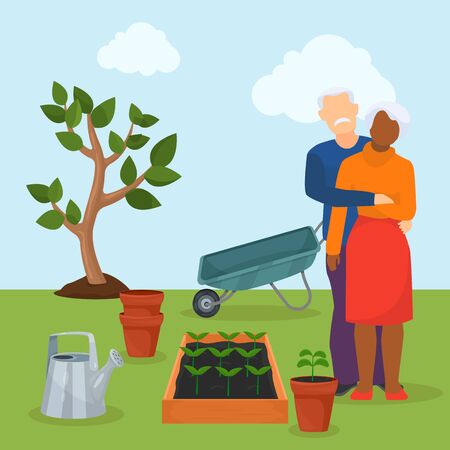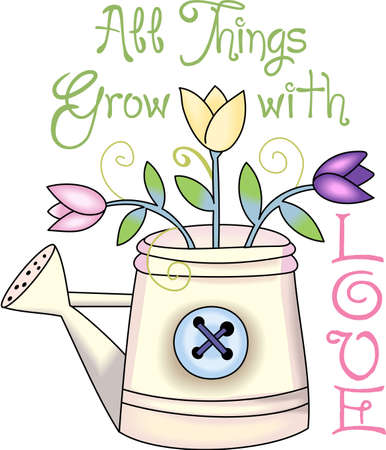1. Understanding the Role of Climate in Indoor Gardening
When it comes to indoor gardening, most growers focus on lighting, soil, and water, but local climate conditions play a critical role in shaping your indoor garden’s success. Whether you’re growing leafy greens in Boston during a frosty winter or nurturing succulents in humid Houston summers, climate factors like temperature fluctuations and humidity levels can significantly impact how your grow lights perform and how efficiently your setup runs. Seasonal changes outside can influence the microclimate inside your grow room, affecting everything from plant growth rates to energy consumption. For example, colder climates may require additional heating or more powerful lights to maintain optimal growth temperatures, while hotter regions could lead to overheating issues if not properly managed. By understanding your local weather patterns and how they interact with your indoor environment, you can adapt your grow light strategy to maximize both plant health and energy efficiency, supporting a sustainable approach that aligns with eco-friendly values and American home gardening traditions.
2. Humidity Levels: Friend or Foe?
When it comes to indoor gardening, humidity isnt just a number—its a balancing act that can make or break your plants vitality. The way you manage moisture in the air goes hand-in-hand with your grow light setup and directly impacts plant health, disease resistance, and overall growth efficiency.
How Humidity Affects Plant Health
Plants rely on transpiration—the process where water moves from roots to leaves and evaporates—to regulate their temperature and nutrient uptake. If humidity is too high or too low, this process gets disrupted. High humidity slows down transpiration, potentially causing nutrient deficiencies, while low humidity speeds it up, risking dehydration and leaf burn, especially under intense grow lights.
Humiditys Role in Disease Resistance
Humidity is a double-edged sword when it comes to plant diseases. Excess moisture creates a breeding ground for mold, mildew, and fungal infections like powdery mildew or botrytis. These issues are often exacerbated by warm conditions under strong grow lights. On the flip side, extremely dry air can stress plants, weakening their natural defenses and making them more susceptible to pests like spider mites.
Interacting with Grow Lights: What Happens?
Your choice of grow lights (LEDs, fluorescents, or HIDs) influences room temperature and subsequently affects relative humidity. For example, high-output HIDs generate more heat, which can lower humidity quickly if not monitored. Conversely, energy-efficient LEDs run cooler but may require supplemental humidity to maintain optimal levels.
| Humidity Level | Plant Impact | Disease Risk | Grow Light Considerations |
|---|---|---|---|
| Low (<40%) | Faster transpiration, risk of dehydration | Lower risk for molds but higher pest pressure | May need humidifier; watch for leaf curl under strong lights |
| Optimal (40-60%) | Balanced growth, healthy transpiration | Lowest risk for both diseases and pests | Easiest for most grow light types |
| High (>60%) | Slowed transpiration, possible nutrient lockout | Higher risk of fungal/mold outbreaks | Increase airflow; consider dehumidifier with warm lights |
For sustainable indoor gardening in any American climate zone, monitoring your humidity—and understanding how it interacts with your grow lighting—is key to creating an eco-friendly system that supports resilient plants without unnecessary energy waste or chemical interventions.

3. Optimizing Your Grow Light Setup for Varying Conditions
Adapting your grow light configuration to shifts in indoor climate and humidity is key to nurturing healthy, resilient plants while minimizing your environmental impact. As temperature and humidity levels fluctuate throughout the year—or even from day to night—your approach to lighting should remain flexible. Start by monitoring your space with a reliable thermometer and hygrometer; these tools help you track microclimate changes that influence how much light your plants truly need. If you notice increased humidity, consider reducing light intensity or duration to prevent excessive transpiration and fungal issues. Conversely, in dry conditions, plants may benefit from longer exposure to lower-intensity lighting, which supports steady growth without causing dehydration.
Smart Adjustments for Sustainable Results
Modern LED grow lights often come with dimmable features or programmable timers. Take advantage of these options to tailor light cycles based on current conditions rather than sticking to a rigid schedule. For example, during hot summer days when heat can stress both your plants and your cooling system, shortening the photoperiod or lowering intensity reduces energy consumption and helps maintain optimal temperatures. In cooler or more humid periods, increasing air circulation with fans alongside gentle lighting encourages healthy growth without spiking utility bills.
Integrating Technology for Responsive Growing
For tech-savvy gardeners, integrating smart plugs or environmental controllers allows you to automate adjustments and respond quickly to climate changes. These systems can sync with sensors, dimming lights or switching them off when set thresholds are met—helping you conserve electricity and extend bulb lifespan. By using only what your plants need when they need it, you support their wellbeing while embracing eco-friendly habits that contribute to a sustainable future.
Conclusion: A Balanced Approach
Incorporating practical adjustments into your grow light strategy not only boosts plant health but also aligns with environmentally responsible indoor gardening practices. Stay observant, make informed tweaks as conditions change, and enjoy thriving greenery with a lighter carbon footprint.
4. Sustainable Energy Choices for Indoor Gardening
Adopting sustainable energy solutions in your indoor garden isnt just a trend—its a reflection of American values like efficiency, resourcefulness, and environmental stewardship. When climate and humidity shape your grow light setup, making eco-friendly choices can help reduce both your carbon footprint and utility bills. Here’s how you can align your indoor gardening with sustainable practices:
Eco-Friendly Lighting Options
Choosing the right grow lights is key for both plant health and energy conservation. LEDs (Light Emitting Diodes) have become the gold standard for eco-conscious growers across the U.S. because they use less electricity, emit less heat, and last significantly longer than traditional options like fluorescent or incandescent bulbs.
| Lighting Option | Energy Efficiency | Lifespan (hours) | Heat Output |
|---|---|---|---|
| LED Grow Lights | High | 25,000-50,000 | Low |
| Fluorescent Tubes | Moderate | 7,000-15,000 | Moderate |
| Incandescent Bulbs | Low | 1,000-2,000 | High |
Energy-Saving Tactics Aligned with American Values
- Use Timers and Smart Plugs: Automate your lighting schedule to ensure lights are only on when needed. This minimizes waste and echoes America’s focus on smart technology for home efficiency.
- Leverage Natural Light: Position your indoor garden near windows to take advantage of sunlight during the day, reducing reliance on artificial lighting.
- Select High-Efficiency Fixtures: Choose ENERGY STAR certified lighting products, which meet strict standards set by the U.S. Environmental Protection Agency.
- Sustainable Power Sources: If possible, connect your indoor grow setup to renewable energy sources such as solar panels—a growing trend among environmentally minded Americans.
- Aim for Proper Humidity Control: Efficient humidity management means less strain on dehumidifiers or air conditioning units, further lowering overall energy consumption.
The Bottom Line: Sustainability Meets Productivity
Pursuing sustainability in your grow light setup not only supports healthy plants but also embodies core American ideals—innovation, conservation, and responsibility. By integrating eco-friendly lighting and smart energy strategies into your indoor gardening practice, you contribute positively to both your community and the planet.
5. DIY Tips: Monitoring and Adjusting Your Environment
Keeping your indoor garden thriving means getting hands-on with monitoring and adjusting climate and humidity levels—two factors deeply tied to your grow light setup. Embracing a do-it-yourself approach not only supports healthy plant growth, but also aligns with sustainable gardening values. Here’s how you can smartly manage your space, using both classic methods and modern technology.
Track Climate with Simple Tools and Smart Devices
Start with the basics: invest in a reliable digital thermometer and hygrometer to track temperature and humidity around your plants. For a tech-savvy upgrade, consider smart sensors that send real-time data directly to your smartphone. Many American gardeners use Wi-Fi-enabled monitors like the Govee or SensorPush, which allow you to check conditions even when you’re away from home.
Adjusting Temperature for Energy Efficiency
If your grow lights are heating things up, use energy-efficient fans or small air circulators to keep temperatures stable without racking up your electricity bill. Set up programmable timers so fans or heaters operate only when needed—helpful during those hot summer afternoons or chilly winter nights common across many U.S. regions.
Managing Humidity for Healthy Plants
To boost humidity, try placing trays of water near your plants or using a humidifier made for indoor gardening. If excess moisture is an issue—especially in humid climates—dehumidifiers or even DIY solutions like silica gel packs can help keep things in balance. Always monitor closely; too much fluctuation can stress your plants and waste resources.
Sustainable Pro-Tips
Opt for LED grow lights, which generate less heat and use less energy than traditional bulbs. Recycle rainwater if possible for misting or humidity trays, reducing reliance on municipal water. And remember: keeping a close eye on environmental data helps you use just what’s needed—nothing more—which is the heart of eco-friendly indoor gardening.
By combining hands-on observation with smart tech, you’ll create an optimized environment that benefits both your plants and the planet—making every harvest a win for sustainability.
6. Building a Resilient and Sustainable Indoor Garden
Creating an indoor garden that flourishes all year long—regardless of external climate fluctuations or changes in humidity—calls for a thoughtful, eco-conscious approach. To minimize your carbon footprint while enjoying healthy plants, start by choosing energy-efficient LED grow lights and setting them on programmable timers to reduce unnecessary electricity use. Monitor your indoor humidity with smart sensors and opt for natural methods of regulation, such as grouping plants together to create microclimates or using pebble trays for passive moisture control instead of energy-intensive humidifiers or dehumidifiers. Embrace organic, peat-free soil amendments and composting practices to nourish your plants sustainably.
Best Practices for Year-Round Success
- Select climate-appropriate plant species: Choose varieties well-suited to your home’s typical temperature and humidity ranges, reducing the need for constant environmental adjustments.
- Maximize natural light when possible: Place your garden near windows or skylights to supplement artificial lighting, cutting down on energy consumption.
- Implement water-saving techniques: Use self-watering systems, mulching, or moisture-retaining pots to conserve water and stabilize humidity naturally.
Eco-Friendly Maintenance Tips
- Regularly clean grow lights and ventilation equipment to ensure optimal efficiency and longevity.
- Repurpose rainwater or use filtered tap water when possible, lowering resource demands.
Cultivating Community and Knowledge Sharing
Connect with local gardening groups or online communities focused on sustainable indoor gardening. Sharing tips, seeds, and resources helps build resilience not just for your own setup but also within your broader community. By integrating these mindful practices into your routine, you can nurture a thriving indoor garden that aligns with American values of innovation, stewardship, and sustainability—all while treading lightly on the planet.


